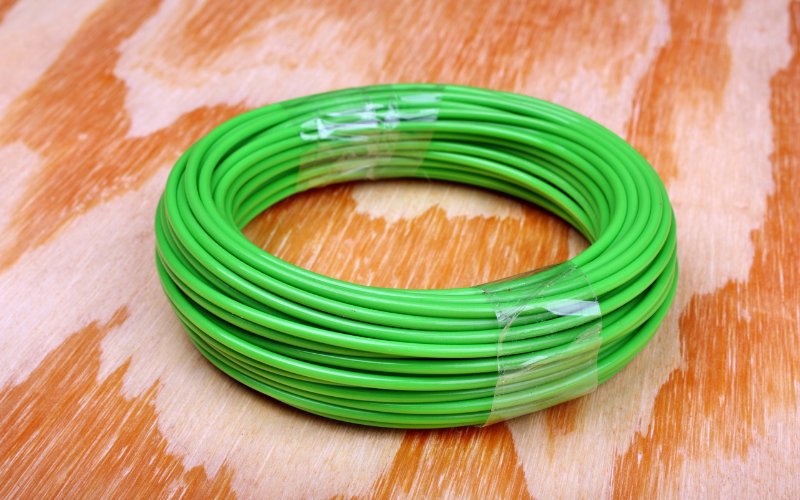You’ll hear a bunch of stories about people soaking trimmer lines in water to help keep them from breaking so often. Now, this sounds like a bit of a strange idea, but maybe it works.
Well, I had an old spool of line stored in my garage set to one side because it was brittle. I couldn’t even load up my weed eater head without it cracking.
So, I tried out this method to see if there was any truth in the myth. Here’s what happened.

Soaking Trimmer Line in Water – Does It Really Work? (The Short Answer)
Weed eater lines are made of an absorbent material which, along with being able to absorb fluids, can also discharge fluids.
So, if the weed eater line is allowed to dry out, then it will become brittle.
Soaking a trimmer line in water adds back moisture and keeps the line flexible and supple.
What’s the Theory Behind Soaking Trimmer Line in Water?
Most weed eater lines are made of monofilament nylon used in manufacturing products such as fishing lines, surgical sutures, and of course, the line you use to trim your lawn.
The specific polymers used in weed eater lines can retain about 10-15% of their weight in water.
This means that the flexibility increases and shattering reduces once water is absorbed into the line. This is because the water acts like a plasticizer and a softener.
So, if your weed eater line feels stiff and brittle, then soaking your trimmer line in water will help.
My Personal Experience with Soaking Trimmer Line in Water
With the science out of the way, how effective is this method, and should you soak your trimmer line in water? Well, I gave it a try, and yes, it worked.
The small spool of trimmer line I had left on my shelf was heading toward the trash can until I decided to drop it in a bucket of water instead.
To my surprise, the trimmer line got back some of its flexibility. So, it did work but not completely.
It turns out that monofilament nylon can dry out to such a point that it’s beyond saving. This is because once trimmer line dries out, it cracks and splinters.
In this case, no matter how long you soak your old trimmer line in water, it won’t repair the cracks.
So, it seems I was a bit late using this method. I guess the best approach is to use this method before the line dries out to avoid cracking altogether.
A Few Tips If You Do Decide to Soak Your Trimmer Line in Water
During my experiment, I found a few things that could help you if you want to try this method.
Here are some tips to help keep your weed eater line flexible.
Soak Trimmer Line in Water for 24 Hours
As some people might suggest, you don’t need to leave your weed eater line in a bucket of water. There is a limit to how much water monofilament nylon can suck in.
So, leaving the trimmer line soaking in water for days on end will have no greater effect than just leaving it in for 24 hours.
Also, I’m pretty sure a bucket of water left on the side will start to turn green with algae if you leave it there too long.
Use a Plastic Bag & Damp Cloth
Because monofilament nylon can only absorb about 10-15% of its weight in water, you don’t actually need much water. Definitely not a bucket full.
So if you leave your trimmer line in a plastic bag along with a damp cloth or sponge, you’ll achieve the same outcome.
And the upside is you won’t end up with a bucket of green water that stinks your garage or shed out if you want to use this as a long-term solution.
Rehydrate New Trimmer Line
Just because a new pack of trimmer line is new to you doesn’t mean it hasn’t been sitting around in the supply chain for months.
So, as soon as you get home with your new trimmer line, try rehydrating it for a while to restore its flexibility.
Keep Your Line Out of the Sun
I try to always find the root of the problem when it comes to my lawn equipment. In the case of my trimmer line, direct sunlight and hot temperatures are the enemies.
So, store your trimmer line in the shade and keep it away from the sun. If you have shelving in your shed or garage that is next to a window, remember that the sun moves during the day…I’d just try to avoid storing line next to a window altogether.
Also, keeping your line in its original packaging will help keep moisture in your line.


Leave a Reply